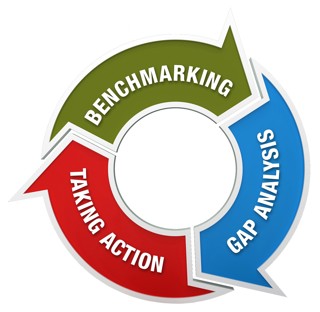In January we looked at the four broad sections within the Driving for Better Business online risk assessment and noted that the current user average fell short of what was required in each of those areas.
The area with the biggest shortfall was company fleet policies and processes with a user average score of just 63% against what we believe should be a target score of at least 87%. The reason for the higher target being that many of the 15 questions in this section relate to actions that should be central to how fleets handle their duty of care.
This month, we’re going to look at some of these issues in more detail because analysis of the questions with the poorest results may be highlighting a costly problem for fleet risk and safety managers.
The first of those questions is: “Are all directors and managers in the business aware of their legal obligations to manage work-related road safety, including vehicle maintenance and driver behaviour?” And the answer is surprising.
Only 63% of users said yes, their directors were fully aware, while 7% said No and 30% were ‘working towards’ this.
Now, remember, this question is about understanding legal obligations and the 30% who marked ‘working towards’ is a puzzle. It implies that a knowledgeable fleet safety manager who understands these obligations is struggling to get his directors to take them seriously, despite warnings and evidence that they need to sit up and take notice. Maybe they pay lip service but don’t put the required actions into practice, leaving them, and the business, exposed.
When asked: “Do you have a documented HSE-compliant ‘Driving at Work’ road safety policy?” only 59% answered yes – leaving a staggering 41% who don’t currently have a policy in place with just over half of those ‘working towards’ it.
Having helped many organisations write and implement Driving at Work policies, we know first hand just how hard this can be when the person in charge of managing the risk is trying to push something through against others in the company who feel it will hamper their ability to operate as usual, or are simply focused on other things they think are more important.
When asked if a named director had overall responsibility for this policy, 30% said ‘no’ betraying a lack of high-level ownership of the issue.
The next two questions we’ll look at are: “Is there clear demonstration of top-level commitment to work-related road safety within your company?” and “Do you have an adequate system in place to record all fleet activity, thereby building a robust audit trail that could be referred to in the event of an investigation?”
The responses are virtually identically with just 57% answering ‘yes’ to each. As with the first question on legal obligations, almost 30% state they are ‘working towards’ this.
It’s hard to understand how any company can be ‘working towards’ management commitment – surely, when the issue is explained to your MD or CEO, they either get it or they don’t?
If they do ‘get it’ then they’ll have no problem supporting it, if they don’t, they’ll simply focus on something else. To be ‘working towards’ again implies a frustrated fleet safety manager banging their head against a brick wall trying to get the message through and not being listened to.
As we go through these questions, the news gets worse. Just 55% of companies feature their Driving at Work policy as part of their induction process, meaning some have created a policy that their staff have never seen.
How on earth do these companies then expect staff to follow policies and guidelines? This is a clear case of pointless ‘box ticking’ with no benefits for the company.
The remaining three questions lead us further towards the real issue. Two are closely linked.
When asked: “Do directors and managers understand the true costs to the business from poor management of drivers and vehicles, and the subsequent benefits that come from managing it well?” and “Is driver performance/behaviour monitored to make sure your road safety policy is effective?” the responses were almost identical with less than half answering ‘yes’ and approximately a quarter each responding either ‘no’ or ‘working towards’.
The first of these again implies that not enough directors are aware of the impact that poor management of those who drive for work has on operational efficiency and, ultimately, the company’s bottom line. The image is once again of frustrated fleet safety professionals trying in vain to convince directors to listen properly.
It follows that if directors don’t understand the costs, they won’t see the need to monitor driver performance because they won’t see the benefits. As everyone reading this article knows, the cost benefits can be easier to achieve than trying to increase sales or profit margins by the same amount, which is probably where the misinformed director is focusing their attention.
The question with the lowest positive response, and the last one we’re going to look at here is: “Are all personnel issued with a handbook explaining how these standards are to be achieved?” Just 42% answered ‘yes’ and it leads us to the ultimate problem because the wording of this question is important.
The word ‘standards’ is included for a reason – it’s not about following dictats or instructions, it’s about drivers and employees being professional, having pride in their work and being respected by their peers and managers.
The main challenge from these combined results is that at least a third of those companies completing our online risk assessment appear to have poor leadership.
Some fleet safety professionals who ‘get it’ – who understand what needs to be done and the benefits for the business that will come from doing so – are struggling to convince those above them to give fleet risk management the attention it demands.
How else do we explain the large number of fleet safety professionals ‘working towards’ convincing their directors something needs to be done when the risks are obvious and the benefits are clearly documented in the Driving for Better Business case studies and the regular features on successful fleets that appear in Fleet News?
Leadership is the ability to influence or inspire people to achieve an objective. Strong leadership creates cultures where the desire to achieve those goals becomes ingrained in the workforce. It is also shown by clearly communicating a vision that others can buy into and ensuring those in charge lead by example. Yet it is clear that some leaders don’t buy into the vision themselves so it doesn’t get communicated to drivers.
All the best-run fleets have driver handbooks and regular driver communications. Not having a handbook explaining the standards expected of drivers is indicative of a management that doesn’t really care about the message, or it would ensure it was communicated effectively.
For those companies below the average benchmark in this area, the key to improvement seems to be getting directors to clearly understand the true costs to the business.
Poor driving, or poor management of drivers, leads to increased costs for repairs, maintenance, fuel and fleet insurance – all very significant overheads.
Directors need to understand these aren’t just the everyday costs of operating a fleet – they are directly influenced by the quality of leadership in fleet risk management. Once the costs are truly understood and being monitored, strong leadership and a clearly communicated vision of higher standards can bring significant improvements.
Private sector leadership summit
Driving for Better Business will be inviting leaders from some of the UK’s top businesses to a private sector summit with the theme of leadership.
It will be held at the new McLaren Thought Leadership Centre in Woking and you may wish to encourage your CEO or a board director to attend.
The event is being held on May 8 as part of the United Nations Global Road Safety Week and features contributions from Highways England, HSE, DVSA, and a panel discussion with some of the UK’s leading fleet safety and risk management professionals chaired by Fleet News editor-in-chief Stephen Briers. The event will conclude with a McLaren tour.
To register interest in attending, or to receive further information, check out this site.



















Login to comment
Comments
No comments have been made yet.